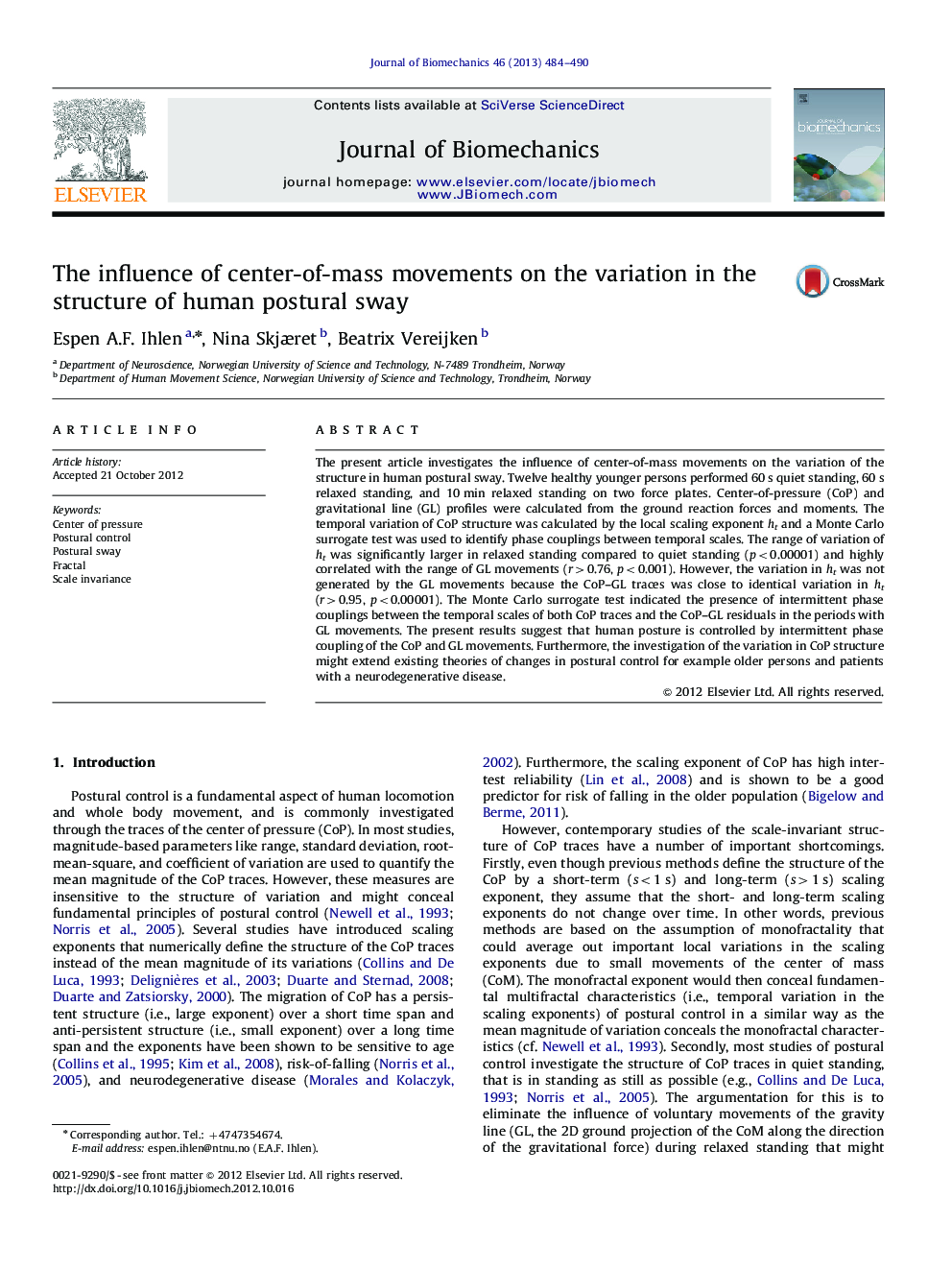| Article ID | Journal | Published Year | Pages | File Type |
|---|---|---|---|---|
| 10431959 | Journal of Biomechanics | 2013 | 7 Pages |
Abstract
The present article investigates the influence of center-of-mass movements on the variation of the structure in human postural sway. Twelve healthy younger persons performed 60Â s quiet standing, 60Â s relaxed standing, and 10Â min relaxed standing on two force plates. Center-of-pressure (CoP) and gravitational line (GL) profiles were calculated from the ground reaction forces and moments. The temporal variation of CoP structure was calculated by the local scaling exponent ht and a Monte Carlo surrogate test was used to identify phase couplings between temporal scales. The range of variation of ht was significantly larger in relaxed standing compared to quiet standing (p<0.00001) and highly correlated with the range of GL movements (r>0.76, p<0.001). However, the variation in ht was not generated by the GL movements because the CoP-GL traces was close to identical variation in ht (r>0.95, p<0.00001). The Monte Carlo surrogate test indicated the presence of intermittent phase couplings between the temporal scales of both CoP traces and the CoP-GL residuals in the periods with GL movements. The present results suggest that human posture is controlled by intermittent phase coupling of the CoP and GL movements. Furthermore, the investigation of the variation in CoP structure might extend existing theories of changes in postural control for example older persons and patients with a neurodegenerative disease.
Related Topics
Physical Sciences and Engineering
Engineering
Biomedical Engineering
Authors
Espen A.F. Ihlen, Nina Skjæret, Beatrix Vereijken,
